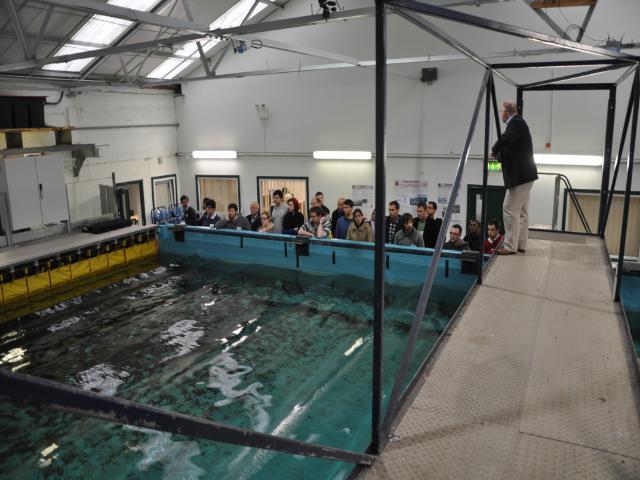The Challenge
The linear test rig control system at Lir-NOTF was operating with legacy hardware and software, making test execution, configuration, and data acquisition increasingly inefficient. The system offered limited flexibility, lacked integration with modern control interfaces, and presented safety and usability challenges. Key issues included outdated control platforms, inadequate data logging capabilities, and restricted accessibility to real-time system controls.
Our Approach
NeoDyne proposed a full system modernisation, replacing the outdated control hardware with a next-generation programmable logic controller (PLC), introducing a new human-machine interface (HMI), and deploying a tailored supervisory control and data acquisition (SCADA) system. Our engineering team worked closely with Lir-NOTF throughout the project to ensure that the upgraded solution met all technical, operational, and research needs.
Key features of the approach included:
- Upgrading to high-performance, scalable automation hardware.
- Developing a user-friendly, locally mounted HMI for direct rig control.
- Implementing a secure and configurable SCADA interface for remote monitoring and data management.
- Enhancing system safety and diagnostics through hardware and software improvements.
About MaREI
MaREI – Research Ireland Centre for Energy, Climate and Marine, coordinated by the Environmental Research Institute (ERI) at University College Cork.
The MaREI is based in Ireland and brings together a network of multidisciplinary researchers across various institutions.
Its mission is to support the transition to a low-carbon, climate-resilient society by conducting impactful research in areas such as renewable energy, environmental monitoring, and sustainable marine and coastal development. Through collaboration with industry and policy-makers, MaREI plays a crucial role in advancing innovative solutions to global sustainability challenges.

Requirements
- Replacement of the legacy PLC with a modern, high-speed processor.
- Installation of a widescreen HMI to allow local control of the rig.
- Development of a full-featured SCADA application to manage trends, logging, alarms, and automation.
- Integration of additional safety features including E-stop buttons and safety interlocks.
- Delivery of comprehensive documentation, training, and future support.
- Facilitation of automated CSV data handling and high-resolution trend logging.
- Enabling system scalability and ease of future configuration by in-house personnel.
Challenges Faced
- System Compatibility: Migrating from a proprietary legacy system to a modular, open-architecture control environment without impacting rig functionality.
- High-Speed Data Handling: Implementing millisecond-level data sampling and secure file transfer for test logs.
- Safety Retrofits: Designing and installing new safety features while working within the constraints of the existing rig infrastructure.
- Knowledge Transfer: Ensuring that Lir-NOTF personnel could manage and modify the system independently following the upgrade.
Final Outcome
The completed upgrade delivered a flexible, high-performance control solution, offering:
- A powerful PLC with advanced processing and logging capabilities.
- Records of force and velocity are stored and can be retrieved for analysis.
- A modern touch-screen HMI enabling intuitive, local control of all rig functions.
- A robust SCADA interface with real-time and historical data trending, test automation, and user-adjustable settings.
- Enhanced safety through additional hardware interlocks and system checks.
- Full system documentation, on-site training, and technical support for post-handover continuity.



